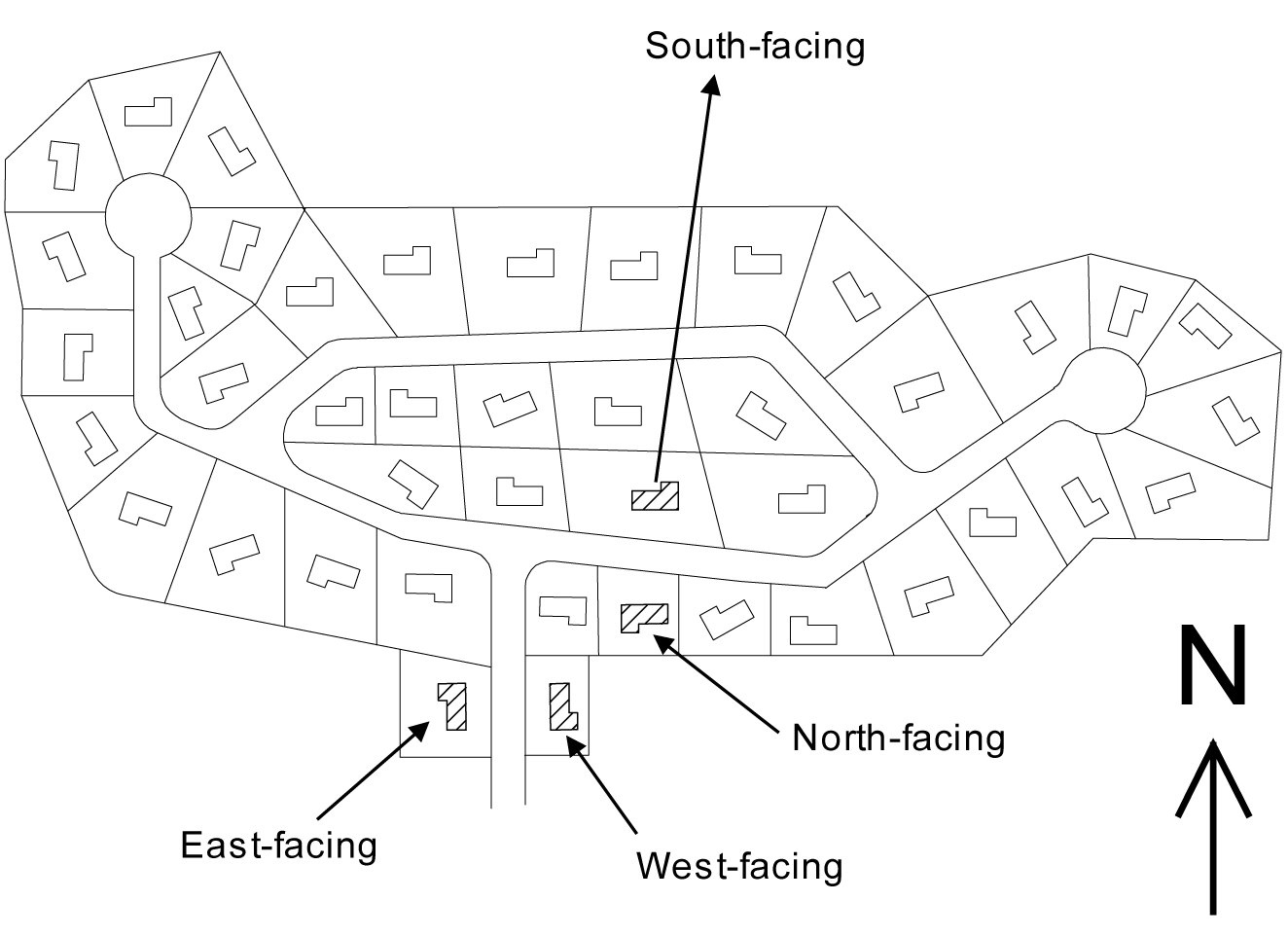
Subdivisions often require a special approach to energy compliance, since they generally include one or a few basic building or unit plans repeated in a variety of orientations. The basic floor plans, as drawn, may also be used in a mirror image or reversed configuration.
The two compliance options for subdivisions are:
1. Model each individual building, or building condition, separately according to the actual orientation.
2. Model all four cardinal orientations for each building or plan type with identical conservation features for no orientation restrictions.
The most straightforward compliance option for subdivisions is to analyze each building in the project separately using any compliance method. This may be practical for subdivisions with only custom buildings, or with only one or two specific orientations for each building plan. This approach requires that each unit comply separately, with separate documentation submitted for each unit plan in the orientation in which it will be constructed.
The performance method may be used to demonstrate that a single-family dwelling plan complies regardless of how it is oriented within the same climate zone. To assure compliance in any orientation, the annual energy consumption must be calculated in each of the four cardinal orientations: true north, true east, true south, and true west. With this option, the buildings must have the identical combination of conservation measures and levels in each orientation and comply with the energy budget in each case.
If a building floor plan is reversed, either the original plans or the reversed plans may be shown to comply in all four cardinal orientations.

Demonstrate Compliance for Each Cardinal Orientation for Each Basic Model Type
For compliance, submit certificate of compliance documentation of the energy budgets for each of the four orientations to the enforcement agency. Only one CF1R form that documents compliance for all four orientations is required to be submitted to the enforcement agency for each unique plan.
Master plans that use the multiple orientation alternative and use a compliance approach that requires HERS field verification must submit a separate copy of the multiple orientation master plan certificate of compliance to the HERS Provider for every dwelling unit in the subdivision to satisfy the requirements of the HERS Provider data registry documentation procedures. In practice, the certificate of compliance information for each multiple orientation master plan may not need to be submitted to the HERS provider data registry more than once. However, a relationship must be established in the HERS Provider data registry among the applicable multiple orientation master plan certificate of compliance and the corresponding dwelling-specific installation certificates (CF2R), and the dwelling-specific certificates of field verification and diagnostic testing (CF3R). Thus, for the multiple orientation compliance approach in a master plan subdivision that has used a compliance option that requires HERS verification, the required energy compliance documentation for each dwelling unit should consist of a multiple orientation master plan certificate of compliance (CF1R), a dwelling-specific installation certificate (CF2R), and a dwelling-specific certificate of verification (CF3R).